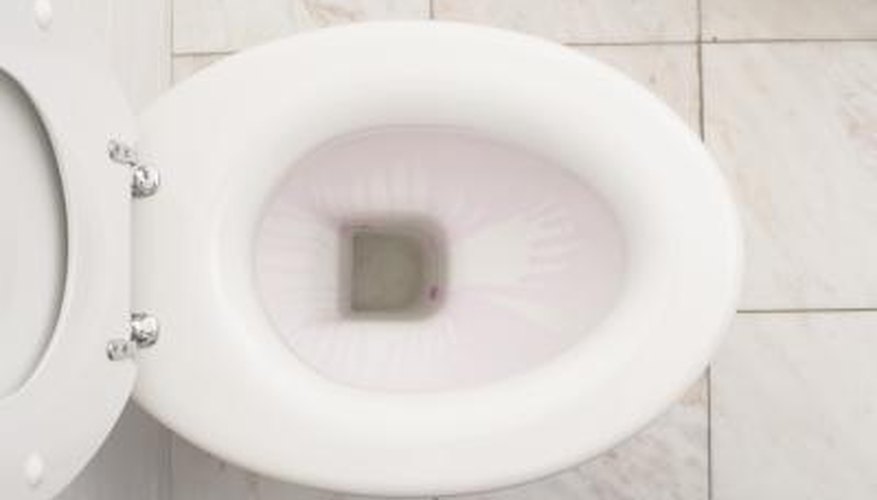When a toilet bowl does not empty completely with each flush, the toilet leaves waste behind in the toilet bowl instead of carrying it down the drainpipe. To correct the problem, you first must understand the cause. Several scenarios, both in the toilet's bowl and tank, can cause a bowl to not empty.
Flapper Valve
The rubber flapper valve inside the toilet's tank controls when and how much of the water drains from the tank and enters the bowl. When you push the handle on the outside of the tank, a chain connected to both the handle and the flapper valve pulls the flapper valve up, allowing the water to go through the large drain opening in the bottom of the tank. Take the top of the toilet's tank off, then watch as you flush the toilet to see how long the flapper valve stays up before it closes the drain hole again. The flapper valve should not cover the drain hole until 80 per cent or more of the water in the tank has drained out, according to Ask the Builder. Simply remove the old flapper valve and fit a new one into the same spot to correct the problem.
- The rubber flapper valve inside the toilet's tank controls when and how much of the water drains from the tank and enters the bowl.
- The flapper valve should not cover the drain hole until 80 per cent or more of the water in the tank has drained out, according to Ask the Builder.
Clog
Toilet clogs provide a dirty obstacle for the water in the toilet's bowl to exit, but you can overcome the clog with the right tools. A funnel-cup plunger comes with a rounded bottom on the cup so it fits snugly into the drain hole in the toilet's bowl. After pumping the plunger hard a dozen times or more, try flushing the toilet again. Feed a closet auger or toilet snake into the toilet's drain pipe if the bowl still does not completely empty to move the clog in the pipe along by force.
- Toilet clogs provide a dirty obstacle for the water in the toilet's bowl to exit, but you can overcome the clog with the right tools.
Float Ball or Assembly
Toilet tanks have either a large float ball on the end of a metal rod or a float assembly that moves up and down on a metal rod. Both a ball and assembly move with the level of water in the toilet and direct the tank's fill valve to stop filling the tank with water. Bend the arm on the float ball upward so the ball allows the fill valve to add more water to the tank, or twist the screw piece on the float assembly so it travels up the rod and allows more water into the tank. Not enough water in the tank will result in partial flushes.
- Toilet tanks have either a large float ball on the end of a metal rod or a float assembly that moves up and down on a metal rod.
- Both a ball and assembly move with the level of water in the toilet and direct the tank's fill valve to stop filling the tank with water.
Build-up in Bowl
Over time, the water jets in the toilet bowl become clogged with hard-water deposits in the same way the aerators on the ends of sink's spouts will become clogged. Cleaning the toilet may eliminate the build-up enough that the bowl empties again. Use a bent wire hanger to knock the build-up out of the holes, but be careful to not scratch the porcelain.
